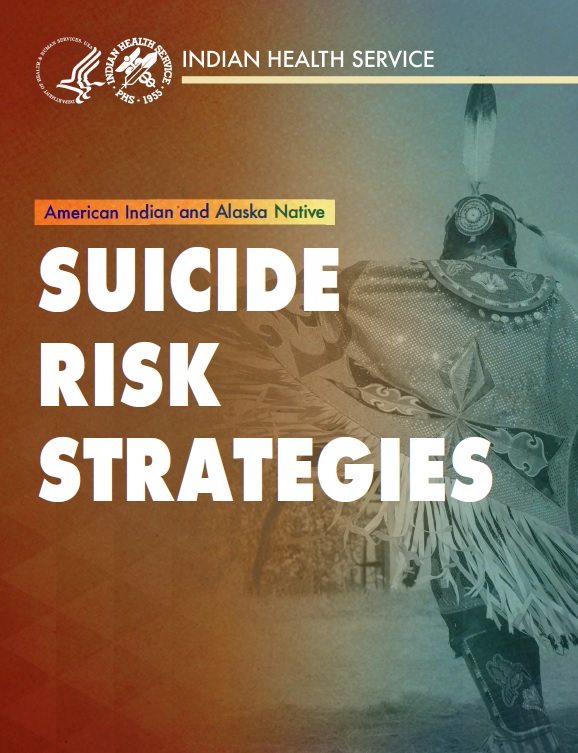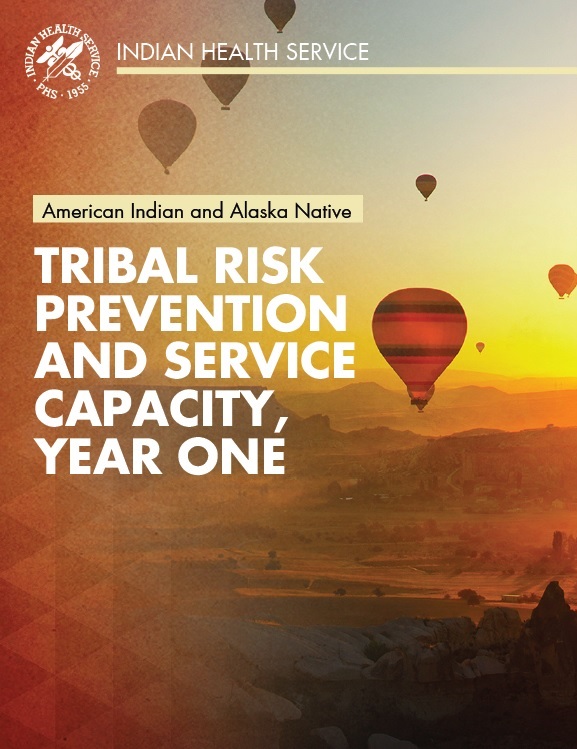Reports
IHS Behavioral Health Analytics performs national, regional, and local evaluations and analyses to support Tribes, IHS, and other interests in their planning and decisions, as they may affect the psychological health development and risk mitigation among American Indian and Alaska Native people and their communities. These reports represent significant cooperation among Tribal partners, policy makers, IHS leaders, universities, and American Indian and Alaska Native researchers. None of these reports establish laws or policies, rather they examine major strategies to make useful observations, define notable trends, and make recommendations for policies, programs, and protocols.
Program Evaluations
Suicide Risk Strategies Report [PDF 1.5 MB]
This report reviews the progress of three recent suicide prevention strategies: The Zero Suicide Initiative in Tribal and federal facilities; enhanced training of Emergency Department staff on use of the Ask Suicide-Screening Questions (ASQ) tool; and use of the first Emergency Department Suicide Screening Dashboard. The evaluation shows the strengths and weaknesses that influence active protocols and future programs.
Potential Gaps in the Substance Use Disorder Continuums of Services [PDF 1.8 MB]
After a completed contracted field study, DBH examined existing policies and programs that may affect IHS's capacity to provide or facilitate continuums of services to American Indian and Alaska Native youth suffering from substance use disorders. This report and infographic review the study and focus on potential gaps in policies and programs, and makes recommendations for follow-on actions.
INFOGRAPHIC: Innovative Approaches: American Indian and Alaska Native (AI/AN) Youth Addressing Substance Use Disorder (SUD) [PDF 1.1 MB]
YRTC Aftercare Evaluation Report [PDF 3.7 MB]
To examine the future capacity of Youth Regional Treatment Centers, DBH examined two post-inpatient aftercare pilot projects to determine their capacity and requirements for services among American Indian and Alaska Native youth. The report highlights the need for digital innovations that are accessible during and after inpatient treatment.
Tribal Risk Prevention and Service Capacity Development, 2021 Cohort Year One [PDF 1.2 MB]
This first annual evaluation of 113 projects by 83 Tribal partners illustrates their progress in building operational capacities, refining service protocols, and serving clients to mitigate risks associated with substance use disorders, domestic violence, and suicides.
Analyses
Report
Tribal Customer Experience Pilot for Post-Award Reporting [PDF - 3.2 MB] – IHS Behavioral Health Initiatives is covered as an example of HHS Reduced Reporting Requirements (pages 26-27)
Journal Articles
Adult Caretaker Engagement and School Connectedness and Association with Substance Use, Indicators of Emotional Well-Being and Suicide Risk, and Experiences with Violence Among American Indian or Alaska Native High School Students – Youth Risk Behavior Survey, United States, 2023 [PDF - 379 KB] – U.S. Centers for Disease Control and Prevention Morbidity and Mortality Weekly Report Supplement – October 10, 2024
Mental Health Outcomes Among American Indian and Alaska Native U.S. Army Soldiers: A Serial Cross-Sectional Analysis – Military Medicine, Volume 188, Issue 7-8, July/August 2023
Racial and Ethnic Differences in Encounters Related to Suicidal Behavior Among Children and Adolescents With Medicaid Coverage During the COVID-19 Pandemic – Research Letter, Adolescent Mental Health; Jama Pediatrics, June 26, 2023
Suicides Among American Indian or Alaska Native Persons ? National Violent Death Reporting System, United States, 2015?2020 [PDF - 404 KB] – U.S. Centers for Disease Control and Prevention Morbidity and Mortality Weekly Report Supplement – September 16, 2022
Partner Tools
National Data Coordinator Service Portal
The National Data Coordinator Service Portal serves Tribal partner organizations and American Indian and Alaska Native (AI/AN) leaders in their collection and storage of digital, project-level data in support of multiple projects. The portal provides public access to video-based user training and a ticketing system for access support. The portal is compliant with HIPAA security requirements. Each partner has a unique account, with convenient means of updating, reviewing, and downloading their data, as well as designating account-specific access to individual users. The DBH National Data Coordinators work with federal program officers to minimize the data collection burden by optimizing the commonality of data elements into an integrated data dictionary. The portal administration is managed through a contracted partnership between DBH and the Albuquerque Area Southwest Tribal Epidemiology Center.
National Analysis Engagement Network
The National Analysis Engagement Network serves Tribal partner organizations and American Indian and Alaska Native (AI/AN) leaders in their organization, distribution, and access to relevant analyses. According to the Indian Health Care Improvement Act, a National Clearinghouse of Tribal outbound information (section 1665a(b)(2)) is necessary and provides a highly-responsive environment for promoting and discovering analyses across disparate sources. The network uses natural language processing for rapid organization and discovery of relevant materials. The network supports the information needs of Tribal consultations, AI/AN researchers, and health system planners, among other potential users.






